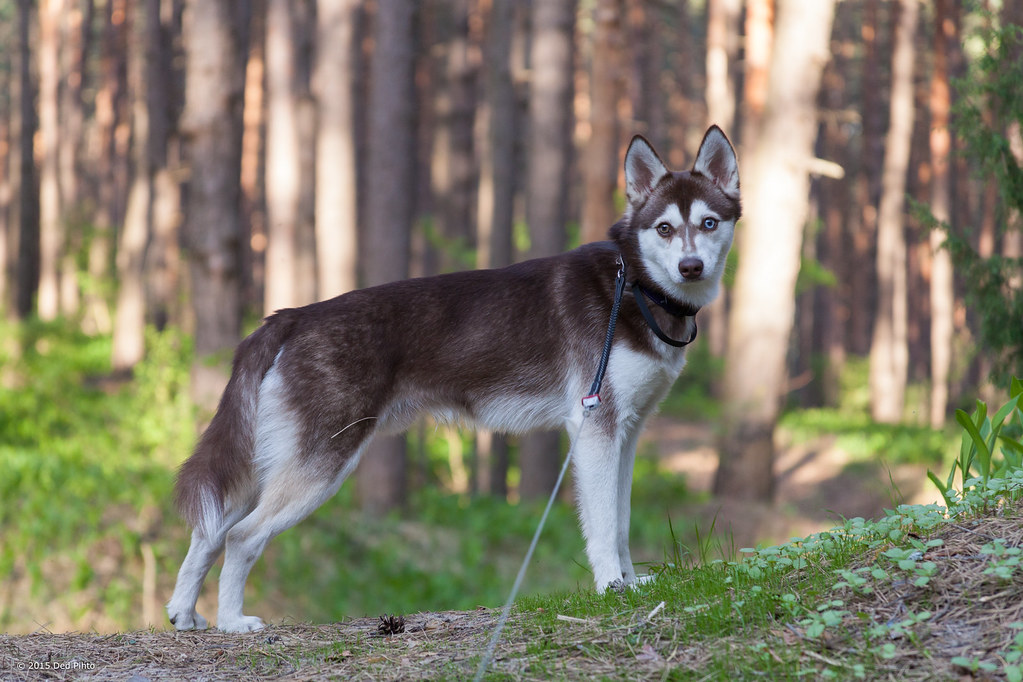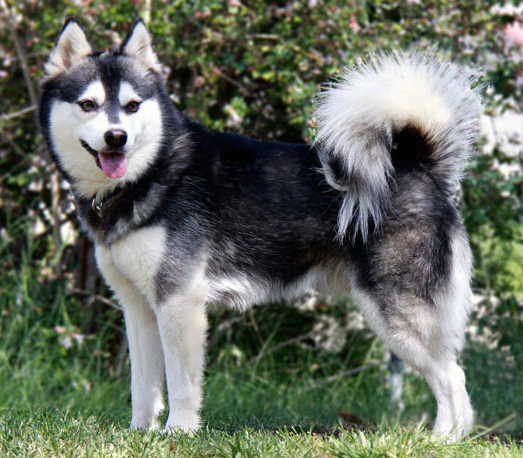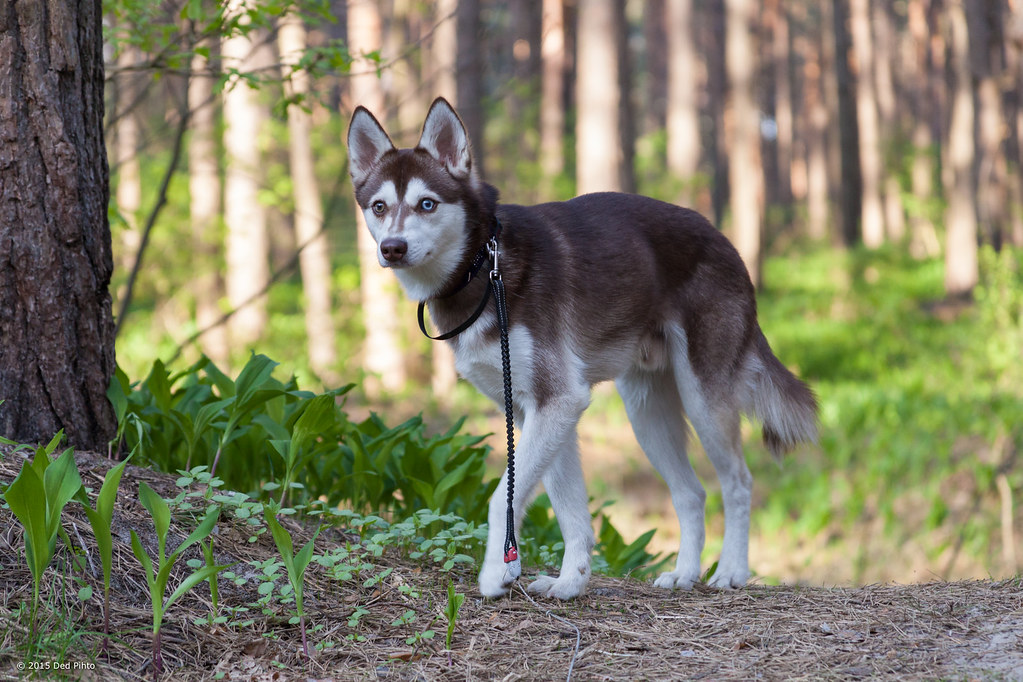Are you searching for a charming, intelligent, and compact canine companion? Look no further than the Alaskan Klee Kai! This breed, often called a “miniature husky,” is known for its striking appearance and delightful personality. In this comprehensive article, we will delve into the world of Alaskan Klee Kai, exploring their history, distinctive characteristics, grooming needs, training requirements, health considerations, living space requirements, socialization needs, and more. By the end, you’ll deeply understand this captivating breed and whether it might fit you and your family.
Key Takeaways
- The Alaskan Klee Kai is a miniature husky breed that captivates dog lovers with its striking appearance and delightful personality.
- Originating from Alaska, this breed was developed to resemble the larger Alaskan Husky while more suitable for smaller living spaces.
- Alaskan Klee Kai is intelligent, energetic, and loyal, making them great companions for active individuals or families.
- Their distinctive characteristics include a wolf-like appearance, expressive eyes, and a range of coat colors and patterns.
Alaskan Klee Kai: A Brief Overview
The Alaskan Klee Kai is a small to medium-sized dog breed known for resembling the Alaskan Husky. They were developed in Alaska in the 1970s by Linda S. Spurlin to create a companion-sized version of the larger Alaskan Husky. These dogs were selectively bred from Siberian and Alaskan Huskies and smaller dog breeds like the Schipperke and American Eskimo Dogs. Today, Alaskan Klee Kai are cherished for their captivating appearance, intelligence, and loving nature.
History and Origin of the Alaskan Klee Kai
Originating in Alaska
This breed has its roots in Alaska, where Linda S. Spurlin created it in the early 1970s. Spurlin, an experienced Alaskan Husky breeder, aimed to develop a smaller version of the Alaskan Husky suitable for smaller living spaces. Through careful breeding and selection, she created the Alaskan Klee Kai, a breed that captures the allure of the Alaskan Husky in a more compact package.
Development and Recognition
The development of this breed involved crossbreeding between Alaskan Huskies, Siberian Huskies, and smaller dog breeds. Spurlin also introduced the Schipperke and American Eskimo Dog into the mix to achieve the desired size and appearance. It took several decades of dedicated breeding efforts before major kennel clubs recognized the breed.
In 1988, the Alaskan Klee Kai Association of America (AKKAOA) was established to promote and protect the breed. The United Kennel Club (UKC) recognized the Alaskan Klee Kai in 1997, followed by the American Rare Breed Association (ARBA) in 2001. While not yet recognized by the American Kennel Club (AKC), the Alaskan Klee Kai continues to gain popularity worldwide.
Distinctive Characteristics and Temperament
Wolf-Like Appearance
One of the most distinctive characteristics of this breed is its striking resemblance to the larger Alaskan Husky and its wolf-like appearance. With erect ears, a curled tail, and expressive almond-shaped eyes, this breed captures the hearts of many dog enthusiasts. Their coat comes in three sizes: Toy, Miniature, and Standard, and various colors and patterns, including black and white, gray and white, and red and white.
Intelligent and Energetic
This breed is a visually captivating breed and highly intelligent and energetic. These dogs thrive on mental and physical stimulation, ideal for active individuals or families who enjoy outdoor activities. Engaging their minds through interactive games and providing regular exercise is essential to keep them happy and prevent boredom.
Loyal and Loving
Despite their small size, Alaskan Klee Kai is known for their loyalty and devotion to their families. They form strong bonds and often become attached to their human companions. Their loving nature makes them excellent family pets, provided they receive proper training and socialization from an early age. With their alertness and protective instincts, Alaskan Klee Kai can also make excellent watchdogs.
Grooming Needs
Grooming needs for the Alaskan Klee Kai are moderate, and regular maintenance helps keep their coat healthy and beautiful. Here are some essential grooming tips for this breed:
- Brushing: The Alaskan Klee Kai has a double coat that sheds moderately. Regular brushing, ideally two to three times weekly, helps remove loose hair and prevents matting. A slicker brush or a comb with medium-length teeth is suitable for most Klee Kai.
- Bathing: The bathing frequency depends on the dog’s needs and activity level. As a general guideline, bathing every two to three months is usually sufficient unless they get particularly dirty or smelly.
- Nail Trimming: Regular nail trims are essential to prevent discomfort and potential injuries. Aim to trim the nails every few weeks or as needed, taking care not to cut into the quick—the sensitive part of the nail.
- Ear Cleaning: Alaskan Klee Kai should have their ears checked and cleaned regularly to avoid infections. Use a gentle, dog-friendly ear cleaner and cotton balls to remove dirt or wax buildup.
- Dental Care: Good oral hygiene is crucial for overall health. Brush your Alaskan Klee Kai’s teeth regularly using a canine toothbrush and toothpaste. Dental chews and toys can also help keep their teeth clean.
Remember to introduce grooming routines to your Alaskan Klee Kai puppy early, making it a positive and rewarding experience. This will help them become accustomed to being handled and groomed as they grow.
Training Needs
Importance of Training
Training is vital for all dog breeds; the Alaskan Klee Kai is no exception. Early socialization and consistent, positive reinforcement training are essential to shaping them into well-mannered and obedient dogs. Here are some key training considerations for the Alaskan Klee Kai:
Socialization
Expose your Alaskan Klee Kai puppy to a wide range of people, animals, and environments from an early age. This helps them develop confidence and positive associations with new experiences, reducing the likelihood of fear or aggression later in life.
Basic Commands
Start with basic obedience commands such as “sit,” “stay,” “come,” and “down.” Use positive reinforcement techniques such as treats, praise, and play to reward desired behaviors.
Leash Training
Teach your Alaskan Klee Kai to walk calmly on a leash. Begin with short sessions in a low-distraction environment and gradually increase the difficulty level. Consistency and patience are key.
Mental Stimulation
The Alaskan Klee Kai is an intelligent breed that thrives on mental challenges. Engage them with puzzle toys, interactive games, and training sessions that stimulate their minds.
Advanced Training
Once your Alaskan Klee Kai has mastered basic commands, you can explore more advanced training activities such as agility, obedience trials, or even canine sports like flyball or rally.
Training should always be positive, rewards-based, and tailored to your dog’s needs. Seek the guidance of a professional dog trainer if needed, particularly if you’re a first-time dog owner or facing specific training challenges.
Health Considerations
Generally Healthy Breed
The Alaskan Klee Kai is considered a relatively healthy breed. However, like all dogs, they may be prone to certain genetic health conditions. Responsible breeders conduct health tests to minimize the risk of passing on these conditions to offspring. Some health considerations for the Alaskan Klee Kai include:
- Luxating Patella: This condition involves the displacement of the kneecap, leading to lameness and discomfort. Regular veterinary check-ups can help detect any potential patellar luxation early on.
- Eye Disorders: Alaskan Klee Kai may be predisposed to certain eye conditions, such as juvenile cataracts, progressive retinal atrophy (PRA), and corneal dystrophy. Regular eye examinations by a veterinary ophthalmologist are recommended.
- Dental Health: Due to their small size, Alaskan Klee Kai may be prone to dental issues such as overcrowding, misalignment, and periodontal disease. Establishing a good dental care routine and regular veterinary dental check-ups are crucial.
- Allergies: Some Alaskan Klee Kai may develop allergies, manifesting as skin irritations, itching, or gastrointestinal issues. Identifying and avoiding potential allergens and consulting with a veterinarian can help manage these conditions.
- Genetic Testing: Reputable breeders often conduct genetic testing to screen for potential hereditary diseases. When adopting an Alaskan Klee Kai, ask the breeder about the health testing performed on the parents to ensure the best possible start for your new companion.
Living Space Considerations
Moderate Energy Levels
While the Alaskan Klee Kai is an active breed, they have moderate energy levels compared to larger husky breeds. As long as their exercise needs are met, they can adapt well to various living environments, including apartments or houses with small yards. However, providing them with regular exercise and mental stimulation is vital to prevent boredom and destructive behaviors.
Exercise Requirements
Alaskan Klee Kai benefits from daily exercise to keep them physically and mentally fit. They enjoy brisk walks, jogging, playing fetch, and interactive games that challenge their minds. Aim for at least 30 to 60 minutes of exercise daily, but remember that individual needs may vary.
Living with a Klee Kai in an Apartment
Living in an apartment is possible with an Alaskan Klee Kai, but ensuring they receive enough exercise and mental stimulation is essential. Regular walks, visits to the dog park, and interactive toys can help them burn off energy. Be aware that excessive barking can concern some individuals, so proper training and socialization are crucial.
Secure Fencing
Ensure you have secure fencing when providing outdoor time for your Alaskan Klee Kai. These dogs have a natural prey drive and may be tempted to chase small animals. A fenced yard or secure dog park provides a safe space for them to play and explore.
Interaction and Bonding
Alaskan Klee Kai is a social animal and thrives on interaction with their human family. They are not suited to be left alone for long periods and may develop separation anxiety or exhibit destructive behaviors if neglected. Ensure you have enough time to devote to their care, exercise, and companionship.
Remember, the living space requirements for an Alaskan Klee Kai are not solely based on the size of your home but instead on meeting their exercise needs and providing them with mental stimulation and social interaction.
Socialization and Alaskan Klee Kai
Early Socialization is Key
Socialization is a critical aspect of raising a well-rounded Alaskan Klee Kai. Early and positive experiences with various people, animals, and environments help them develop into confident and well-behaved adults. Here are some socialization tips:
- Expose them to different environments: Introduce your Alaskan Klee Kai to various settings such as parks, busy streets, and other types of flooring (e.g., hardwood, carpet, grass) to build confidence.
- Introduce them to different people: Expose your Klee Kai to people of different ages, ethnicities, and appearances. This helps them become comfortable with a diverse range of individuals.
- Socialize with other animals: Encourage positive interactions with well-behaved dogs, cats, and small animals to promote good behavior and prevent aggression or fearfulness.
- Positive reinforcement: Reward your Alaskan Klee Kai with treats, praise, and play when they exhibit calm and appropriate behavior in different social situations. This reinforces positive associations and helps them understand what is expected of them.
Socialization should be an ongoing process throughout your Alaskan Klee Kai’s life. By providing positive experiences and exposure, you can help them become confident, friendly, and well-adjusted dogs.
Caring for an Alaskan Klee Kai
Nutrition and Feeding
Proper nutrition is essential for the health and well-being of your Alaskan Klee Kai. Provide a balanced, high-quality diet that meets their needs based on age, size, and activity level. Consult with your veterinarian to determine your dog’s appropriate portion sizes and feeding schedule.
Regular Veterinary Care
Routine veterinary care is crucial to keeping your pup healthy. Schedule regular check-ups, vaccinations, and parasite prevention treatments. Additionally, discuss preventive measures such as spaying or neutering with your veterinarian.
Dental Care
Maintaining good dental hygiene is vital for your pup’s overall health. Brush their teeth regularly using a dog-specific toothbrush and toothpaste. Dental chews, toys, and regular professional cleanings can also contribute to healthy teeth and gums.
Exercise and Mental Stimulation
Alaskan Klee Kai requires regular exercise and mental stimulation to stay happy and healthy. Engage them in daily walks, interactive play sessions, and puzzle toys that challenge their minds. Adequate exercise helps prevent behavioral issues arising from boredom or excess energy.
Love and Attention
Alaskan Klee Kai thrives on love, attention, and companionship. Set aside quality time to bond with your dog through grooming sessions, training, playtime, and cuddles. They are loyal and affectionate companions who will reward you with love and devotion.
Adopting an Alaskan Klee Kai
Finding a Reputable Breeder
If you decide to get an Alaskan Klee Kai from a breeder, it’s essential to do thorough research and find a reputable one. Look for breeders who prioritize the health and well-being of their dogs, perform health tests on breeding stock, and provide proper socialization for puppies.
Consider Adoption
Another option to bring an Alaskan Klee Kai into your life is through adoption. Many rescue organizations and breed-specific rescues often have Alaskan Klee Kai available for adoption. By adopting, you provide a loving home for a dog in need.
Responsible Ownership
Owning an Alaskan Klee Kai requires responsibility and commitment. Ensure you have the time, resources, and lifestyle to meet their needs before bringing one into your home. They thrive in an environment with ample exercise, mental stimulation, and social interaction.
Is the Alaskan Klee Kai Right for You?
While the Alaskan Klee Kai is an adorable and captivating breed, it’s essential to consider whether they fit your lifestyle and preferences. Here are a few key points to consider:
- Activity Level: Alaskan Klee Kai is energetic and requires regular exercise and mental stimulation. If you lead a sedentary lifestyle or have limited time for daily routine, this breed may not be the best fit.
- Time Commitment: Alaskan Klee Kai thrives on human interaction and can suffer from separation anxiety if left alone for long periods. They require a significant time commitment for training, socialization, and companionship.
- Space: While Alaskan Klee Kai can adapt to different living spaces, they still require enough room for exercise and play. If you live in a small apartment without access to outdoor areas, consider whether you can provide alternative exercise opportunities.
- Grooming: Alaskan Klee Kai has moderate grooming needs, including regular brushing and occasional baths. If you prefer a low-maintenance breed, consider whether you have the time and willingness to meet their grooming requirements.
- Allergies: Some individuals may have allergies to dog dander. If you or someone in your household has allergies, spend time with Alaskan Klee Kai before committing to ensure there are no adverse reactions.
Owning a dog is a long-term commitment, and choosing a breed that aligns with your lifestyle, resources, and preferences is essential.
Frequently Asked Questions
Is an Alaskan Klee Kai a good family dog?
Yes, this breed can be excellent family dogs. They are loving, loyal, and enjoy being part of the family. However, providing them with proper training, socialization, and supervision around small children is essential to ensure a harmonious relationship.
Is Alaskan Klee Kai expensive?
Alaskan Klee Kai puppies can be relatively expensive, ranging from $2,000 to $4,000 or more. The cost can vary depending on lineage, quality, and breeder reputation.
Why is Alaskan Klee Kai so small?
The small size of this breed is a result of selective breeding. Breeders aimed to create a smaller version of the Alaskan Husky while maintaining a distinctive appearance and temperament.
Is an Alaskan Klee Kai a mini husky?
Although this breed shares physical similarities with the Siberian Husky, it is not a mini husky. It is a separate breed with its own unique characteristics and genetic lineage.
How rare are Alaskan Klee Kai?
This breed is considered a relatively rare breed. The controlled breeding programs and the limited number of breeders contribute to their rarity. However, their popularity has been increasing in recent years.
Are Alaskan Klee Kai good with children?
This breed can be good with children when properly socialized and trained. However, supervision and teaching children to interact respectfully with the dog are essential due to their small size and potential sensitivity.
Conclusion
The Alaskan Klee Kai is an enchanting breed strikingly resembling the Alaskan Husky. Their intelligence, loyalty, and affectionate nature make excellent companions for the right owners. However, thriving requires commitment, socialization, and mental and physical stimulation.
Before welcoming an Alaskan Klee Kai into your home, consider your lifestyle, resources, and ability to meet their needs. Whether through responsible breeding or adoption, providing a loving and suitable environment for an Alaskan Klee Kai will result in a rewarding and fulfilling human-dog bond.
Let’s find these deserving animals their forever homes together!
Join Bone Voyage Dog Rescue and give abandoned and neglected pets a second chance at happiness.



Ready to take action and make a difference in the lives of these pets in need? Get in touch with us now!




Together, we can make tails wag and hearts sing! Make a difference today, not tomorrow!



